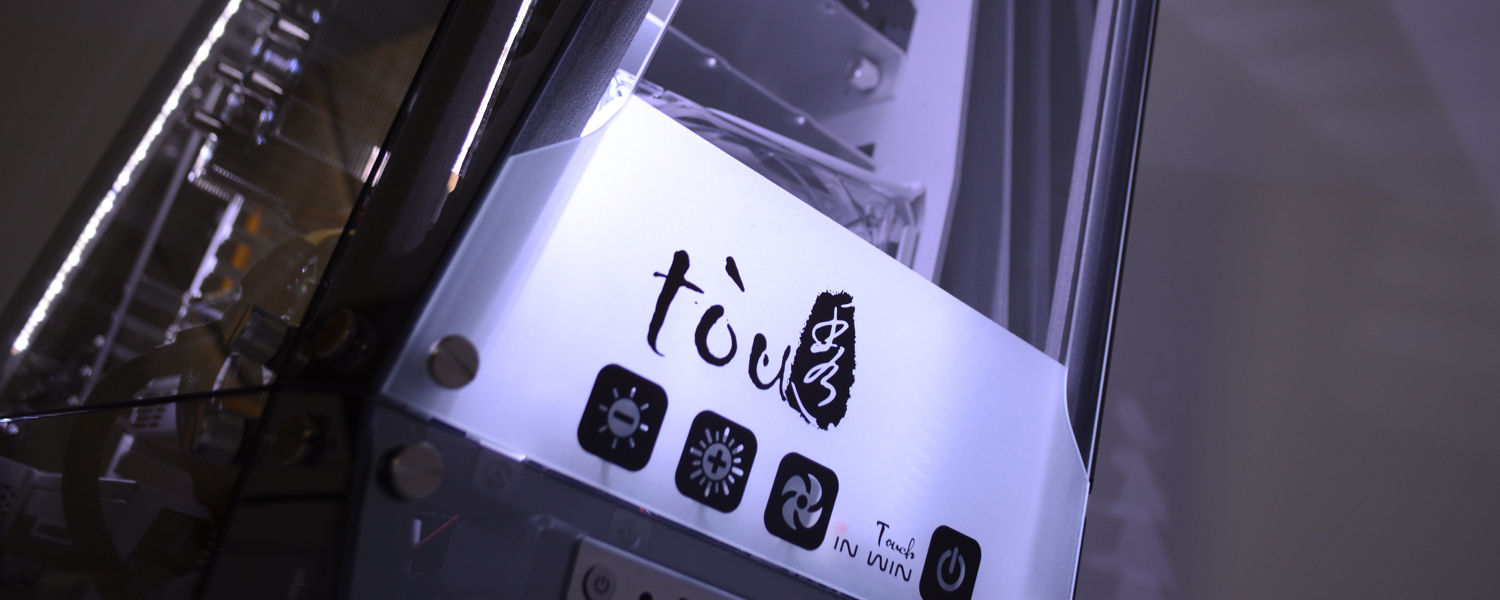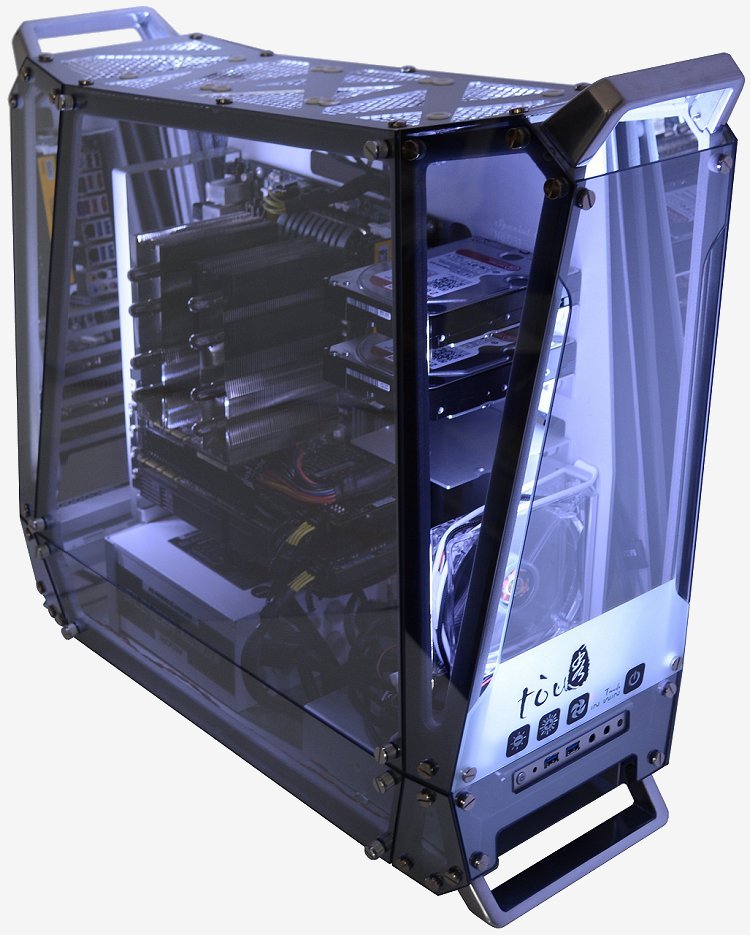I recently helped a friend build a high-end gaming system – somewhat of a 'spare no expense' deal with an Intel Extreme Edition CPU, 3-way GTX 780 Ti SLI cards and so much RAM that it could hold an OS and games, though several SSDs were employed for that task. Choosing an equally impressive case wasn't so straightforward, especially if you're looking for something unique such as the In Win D-Frame.
We reviewed the D-Frame last June and it remains one of the coolest cases I've seen. Despite receiving mostly negative feedback from you guys, it was fun to look at, fun to work with and just fun to own. It was expensive for a mid-tower at $400 but not impossible to justify and my friend would have happily paid the price. Unfortunately, the D-Frame wasn't big enough for everything he wanted in the build.
After considering the CM Cosmos II and the Lian Li PC-P80NB, he settled on the Corsair Obsidian 900D despite being a bit boring for his taste. Now months later, he is thinking about swapping to an In Win case that we just recently found: the tòu, an $800 enclosure inspired by glass architecture and named after the Chinese word for "transparent" – precisely the sort of flair my friend had been looking for.
The tòu uses 3mm tempered glass surrounded by a metal skeleton and is finished with a special coating that turns the outside of the chassis into a mirror when your PC is off. However, when illuminated from the inside with your system on, the tòu's mirror coating becomes transparent, showing off your internal hardware and hopefully reassuring your $800 purchase.
The outer panels are made up of 3mm-thick sheets of tempered glass finished with a semi-transparent reflective coating. This is the first time we have seen an entire case wrapped in this stuff and it's a pretty cool idea.
In the past we have seen cases made entirely of clear acrylic sheets, but they have all looked messy and scratched easily.
The tòu's skeleton has been made from a very thick aluminum cast which holds all sixteen glass panels in place as well as all the hardware inside.
Out of the sixteen panels, just six of them are designed to be removed and they're pretty easy to spot as they are secured using large thumb screws, while the non-removable panels have slimmer screws.
While we admit that the exposed bolts might take away from the otherwise clean design, they are an obvious necessity. Making the case without them would have been extremely difficult for both In Win and the user.
Like the glass buildings from which the tòu draws its inspiration, the chassis features a number of cool angles, making it quite different from the more traditional rectangular box. Combining interesting angles with highly reflective glass gives the tòu a very special look.
Despite its massive 97.3L volume, the tòu only supports ATX motherboards and not the larger E-ATX or bigger boards. This is surprising given the case measures 585mm tall, 258mm wide and 645mm long, making it roughly the same size as the Corsair Obsidian 800D which does support E-ATX boards.
However, we'd expect the tòu to be less space efficient than a more conventional design anyway. We also expected it to be heavier than usual plastic-laden cases so its 20kg weigh-in was no surprise.
Thankfully, despite the fact that glass is heavy, none of the panels are particularly weighty on their own and rubber suction handles help make light work of the panels along with giving you somewhere to grip that won't be affected by fingerprints.
Unfortunately for the tòu, it looks best from behind where there are two sleek glass panels with a small opening in the middle to let cables pass through. When unlit this looks great and when lit up it looks even better. It's a real design win for the tòu and if the top and front were as good it would be flawless from all angles.
The problem is, the front panel just isn't that pretty. Whereas the rear of the case is clean and stylish the front looks a bit tacky, well the bottom half of the front anyway.
For some reason In Win has added in a frosted section with some tacky looking branding and a few touch controls. The touch controls are actually cool, though they could look a lot better, while the huge frosted glass section just looks well out of place. Then at the very bottom there is an opening for an ugly 5.25" optical drive.
If for whatever reason you still need an optical drive in a high-end system, it would be best if it were either hidden behind a glass panel or if it were of the slot loading variety. Had In Win blocked this bay off with a sheet of glass the internal 5.25" bay made for a great hidey to tuck away all those extra cables.
Those touch sensitive buttons that we spoke of control the fan speed, LED light brightness (up and down) as well as the power button. They all work really well despite looking a bit out of place. Below the touch buttons is the I/O panel which is permanently exposed though looks nice enough. The panel features the reset button, drive activity LED, two USB 3.0 ports and a pair of 3.5mm audio jacks.
The case obviously needs some ventilation and glass doesn't offer this well, so In Win implemented an aluminum panel that features a criss-cross kind of design capped off with a thin honeycomb grill.
Compared to the beautiful glass panels, it is a little unsightly, though what really jumps out at us are those white rubber washers around the screws holding the fans in place. Surely some aluminum washers would have been a better aesthetic choice. The rubber does dampen vibrations from fans, but they could have been sandwiched under some larger washers.
Still, if you can look past the top panel and the frosted glass on the front panel, the tòu is beautiful. We even really like the polished aluminum handles at the top of the case, which look nice and work well.
A similar handle design is found at the bottom of the tòu and serve as the feet. There is another criss-cross grill at the bottom which allows the power supply to draw in cool air.










